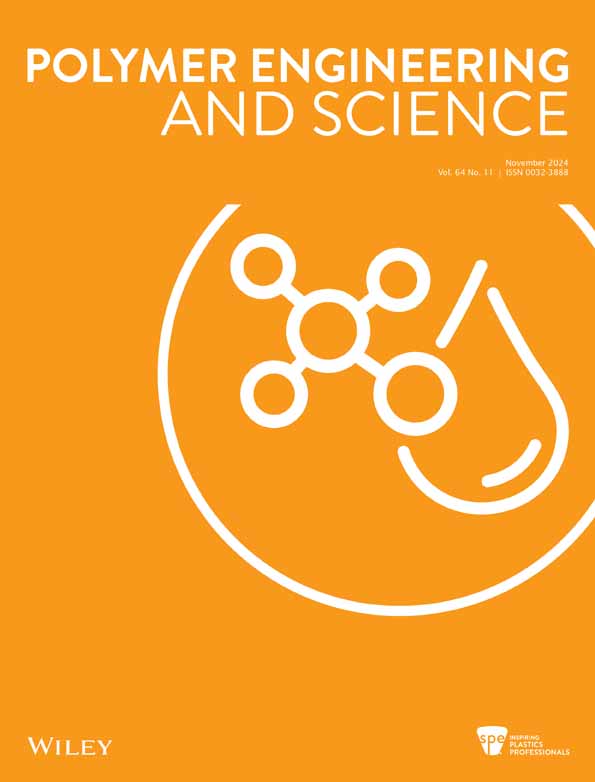Synthesis and characterization of additively manufactured microcapsule‐reinforced polylactic acid composites for autonomous self‐healing
IF 3.2
4区 工程技术
Q2 ENGINEERING, CHEMICAL
引用次数: 0
Abstract
用于自主自愈的添加式制造微胶囊增强聚乳酸复合材料的合成与表征
基于材料挤压的增材制造(AM)工艺通过逐层精确沉积原料来制造物体/结构。聚乳酸(PLA)是增材制造中常用的可生物降解原料,而甲氧基肉桂酸辛酯(OMC)则以其生态友好性和紫外线(UV)防护特性而闻名。本研究的重点是在聚乳酸中注入基于 OMC 的微胶囊的新方法,以开发自愈合复合长丝。经过迭代,确定了填充剂和增塑剂的最佳成分,并挤出了长丝。根据美国材料与试验协会(ASTM)的标准,对注入微胶囊的聚乳酸和纯聚乳酸样品进行了印刷。单轴拉伸试验结果表明,注入微胶囊的样品承受的破坏应变是未注入微胶囊的聚乳酸样品的 10 倍。这归因于有效的载荷分布和复杂的聚合反应(由于 OMC 与基质的相互作用)。通过光学显微镜(OM)和场发射扫描电子显微镜(FESEM)观察样品的断裂表面形态,证实了聚乳酸与 OMC 之间存在牢固的界面。基于微胶囊的样品的布氏硬度下降是由于局部压头力造成的,在狭窄区域造成的破坏比微胶囊破裂的愈合能力更大。注入微胶囊的聚乳酸提高了杨氏模量和破坏应变。与微胶囊的相互作用改善了弹性行为和自愈合能力。FESEM 显示微胶囊与聚乳酸基质紧密结合。
本文章由计算机程序翻译,如有差异,请以英文原文为准。
求助全文
约1分钟内获得全文
求助全文
来源期刊

Polymer Engineering and Science
工程技术-高分子科学
CiteScore
5.40
自引率
18.80%
发文量
329
审稿时长
3.7 months
期刊介绍:
For more than 30 years, Polymer Engineering & Science has been one of the most highly regarded journals in the field, serving as a forum for authors of treatises on the cutting edge of polymer science and technology. The importance of PE&S is underscored by the frequent rate at which its articles are cited, especially by other publications - literally thousand of times a year. Engineers, researchers, technicians, and academicians worldwide are looking to PE&S for the valuable information they need. There are special issues compiled by distinguished guest editors. These contain proceedings of symposia on such diverse topics as polyblends, mechanics of plastics and polymer welding.
 求助内容:
求助内容: 应助结果提醒方式:
应助结果提醒方式:


